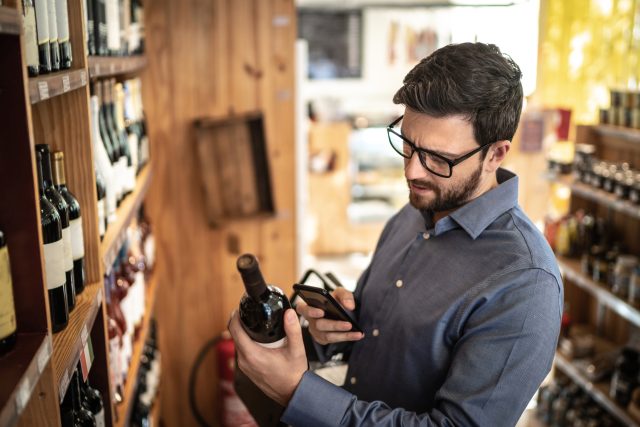‘Hundreds of millions’ of wine labels to be destroyed
By Louis ThomasNew European Commission guidelines concerning the labelling of wine bottles could result in a huge number of already printed labels being destroyed, according to the Comité Européen des Entreprises Vins (CEEV).

According to Regulation (EU) 2021/2117, which was published almost two years ago, from 8 December this year, wines and aromatised wine products must feature a list of ingredients and nutritional value of the contents on the back label. The legislation permitted producers to make the required information digitally accessible via the scanning of a QR code.
According to CEEV president Mauricio González, who is also chairman of González Byass, “several hundred million labels have already been printed, many of them already on shelves” featuring a QR code with an ‘i’ symbol to indicate.
However, last week, just a fortnight before the labelling change was due to be implemented, the European Commission published guidelines which suggested that the QR code had to be indicated on the label with the term ‘ingredients’, and that the ‘i’ indication was insufficient. The European Commission had reportedly first floated the idea of the guideline change in a meeting on 27 September 2023.
This relatively last minute alteration has sparked outcry from the CEEV, a trade body representing the European Union’s wine industry.
“We cannot accept a new interpretation, published 14 days before the date of application, that will imply, on the one hand, the destruction of hundreds of millions of labels already printed and, on the other, our incapacity to print new labels in time to comply with the new regulation deadline. We therefore request the Commission to urgently modify the guidelines,” said González.
CEEV secretary general Ignacio Sánchez Recarte added: “The Commission’s interpretation brings more uncertainty than anything else and leaves wine companies in the dark as of what to do now. The interpretation is pure red tape. It goes against the spirit of the Regulation, jeopardise the Single Market for wines and disproportionately interprets the CMO and Food Information to Consumers Regulations. The interpretation erases the main advantage brought by the electronic labelling system. We are assessing all potential avenues in order to safeguard the Single Market and the interests of wine companies while providing suitable information to consumers.”
According to the CEEV, EU member states including major wine producers France, Italy, Spain and Portugal, have also contacted the European Commission to express disapproval over the unexpected change.
db contacted the European Commission for comment and was sent the following riposte to the CEEV’s claims from Olof Gill, spokesperson for trade and agriculture: “The wine sector has enjoyed two years of transition from the adoption of the new labelling rules, in December 2021, to their actual implementation.”
Partner Content
“In view of the Commission, identifying the QR code with the letter ‘i’ that can refer to many kinds of information, can be seen as hiding information that is compulsory, and potentially misleading consumers,” Gill explained.
He continued: “Labels printed and already used on the bottled wines and bottles placed in the market must not be destroyed, nor bottled wines re-labelled, as all wines produced before 8 December are exempt from the new labelling rules. For most wines the new provisions should be implemented in line with the provided interpretation only from the 2024 harvest.”
Concerning a gripe the CEEV had with the language used for the ‘ingredients’ header on the label, Gill said: “Any wine labelled using an official language of a member state can continue to be marketed within the Union market, and this rule specific to wine applies also to the identification of the QR code. This does not prevent the optional use of multilingual labels, an extended practice also within the wine sector.”
“The wine sector should benefit from their unique labelling regime, showing their commitment to properly inform consumers and avoid interpretations of the rules that might be understood as benefitting only the sector,” he concluded.
Related news:
Ireland becomes first country with health info on alcohol labels
Sold EU wine production tops 16.1bn litres in 2022
Drought and disease see wine production fall to 60-year low
Related news
The winemaking nations hit hardest by Trump tariffs
‘Liberation Day’ or liquor lockdown? Trump’s tariffs rattle the wine & spirits world




